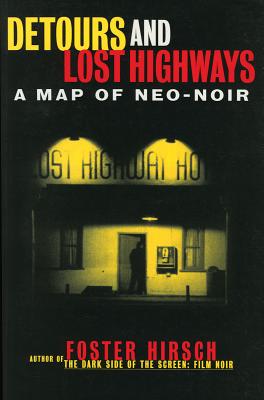Detours and Lost Highways: A Map of Neo-Noir

Detours and Lost Highways: A Map of Neo-Noir
"Detours and Lost Highways begins with the Orson Welles film, Touch of Evil (1958), which featured Welles both behind and in front of the camera. That movie is often cited as the end of the line, noir's rococo tombstone...the film after which noir could no longer be made, or at least could no longer be made in the same way... It is my belief, Hirsch writes, that neo-noir does exist and that noir is entitled to full generic status. Over the past forty years, since noir's often-claimed expiration, it has flourished under various labels. Among the movies he discusses as evidence: Chinatown (1974), Body Heat (1981), John Woo's Hong Kong blood-ballets (e.g., The Killer, 1989) and the pulpy oeuvre of Quentin Tarantino." - Washington Post Book World
PRP: 186.00 Lei
Acesta este Prețul Recomandat de Producător. Prețul de vânzare al produsului este afișat mai jos.
167.40Lei
167.40Lei
186.00 LeiLivrare in 2-4 saptamani
Descrierea produsului
"Detours and Lost Highways begins with the Orson Welles film, Touch of Evil (1958), which featured Welles both behind and in front of the camera. That movie is often cited as the end of the line, noir's rococo tombstone...the film after which noir could no longer be made, or at least could no longer be made in the same way... It is my belief, Hirsch writes, that neo-noir does exist and that noir is entitled to full generic status. Over the past forty years, since noir's often-claimed expiration, it has flourished under various labels. Among the movies he discusses as evidence: Chinatown (1974), Body Heat (1981), John Woo's Hong Kong blood-ballets (e.g., The Killer, 1989) and the pulpy oeuvre of Quentin Tarantino." - Washington Post Book World
Detaliile produsului









